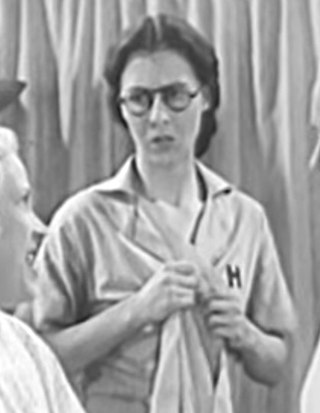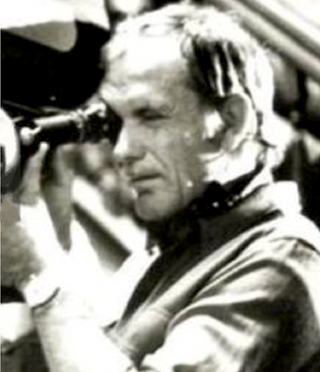Related Research Articles
Manuel "Manolo" Noriega, was a Spanish-born Mexican stage and film actor, screenwriter, and film director.

The Stories of Ray Bradbury is an anthology containing 100 short stories by American writer Ray Bradbury, first published by Knopf in 1980. The hundred stories, written from 1943 to 1980, were selected by the author himself. Bradbury's work had previously been collected in various compilations, such as The Martian Chronicles and The October Country, but never in such a large volume or spanning such a long period of time.

Francis Pierlot was a stage and film actor with over 90 film credits between 1914 and 1953.
James Basevi was a British-born art director and special effects expert.

Manuel Esperón González was a Mexican songwriter and composer. Along with the famous Mexican author Ernesto Cortazar, Esperón cowrote many songs for Mexican films, including "¡Ay, Jalisco, no te rajes!" for the 1941 film of the same name, "Cocula" for El Peñón de las Ánimas (1943), and "Amor con amor se paga" for Hay un niño en su futuro (1952). Other Esperón compositions have become Latin standards such as "Yo soy mexicano", "Noche plateada" and "No volveré", which was used in the first episode of the 2001 soap opera El juego de la vida. Among other performers, Pedro Infante, Los Panchos, and Jorge Negrete have made his songs well-known. His fame in the US derives from when his song The Three Caballeros was used in the Disney film The Three Caballeros (1945).

Manolo Morán was a Spanish film actor.
Arturo Soto Rangel was a Mexican film, television, and stage actor. Soto was best known for appearing in over 250 Mexican films. He appeared in one American movie, The Treasure of the Sierra Madre, which won three Academy Awards and starred Humphrey Bogart, Walter Huston, Tim Holt, Bruce Bennett, and many other successful actors. Soto last appeared on television in 1963, where he starred in Voy de gallo.
The Donaldson Awards were a set of theatre awards established in 1944 by the drama critic Robert Francis in honor of W. H. Donaldson (1864–1925), the founder of The Billboard magazine.

Martín Garralaga was a Spanish actor who worked in Hollywood from the 1930s through the 1960s. He was married to opera singer and actress Rosa Rey.

Mary Field was an American film actress who primarily appeared in supporting roles.
José Baviera was a Spanish film actor. He appeared in more than 190 films and television shows between 1924 and 1979. He starred in Luis Buñuel's 1962 film The Exterminating Angel.
Barney Sarecky was an American film producer and screenwriter, from the late 1930s into the 1950s. The younger brother of producer/screenwriter Louis Sarecky, he had a much more prolific career, writing or producing almost 75 films. Beginning as an associate producer, he would continue in that role until late in his career, when he would move up into the producer role, beginning with 1947's Trailing Danger. In the early 1950s he would move from the big screen to the smaller screen, working as the associate producer on the highly successful television series, Adventures of Superman. He worked on two small television movies in the mid-1960s, and he was an associate producer on the short-lived television series, The American West, in 1968, shortly before his death on August 10.
José W. Bustos was a Mexican film editor who began his career during the Golden Age of Mexican cinema. His brother Jorge Bustos was also an editor.
Jorge Bustos or Jorge Busto was a Mexican film editor. He was the brother of José W. Bustos.
Raúl Martínez Solares was a Mexican cinematographer. He began his career during the Golden Age of Mexican cinema.
Yvonne Wood was an American costume designer. She began her career at 20th Century Fox in 1943.

Anne O'Neal was an American actress. She appeared in many films portraying matronly landladies, for example.
Juan García Garza, nicknamed "El Peralvillo", was a Mexican actor and screenwriter. He wrote the screenplays of the films of comedian Germán Valdés, beginning in Tender Pumpkins (1949), and was credited for the street talk featured in Valdés's films.
James S. Brown Jr. was an American cinematographer. He was a prolific worker with around 150 credits during his career spent generally with lower-budget outfits such as Columbia Pictures, Mayfair Pictures and Monogram Pictures.

William A. Sickner was an American cinematographer. He worked prolifically in film and later television. He worked for a number of studios, particularly Universal and Monogram Pictures.
References
- ↑ Cotter p.17